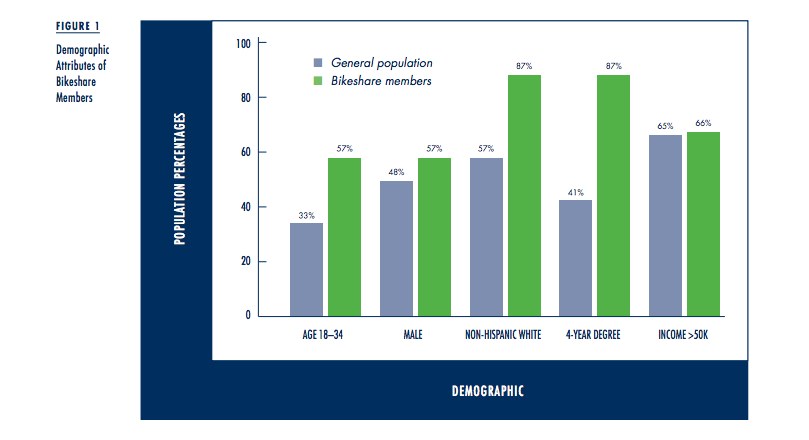*************************************************************************************************************************
Please share with Shareable. DONATE today to support our ad-free coverage of the real sharing economy
*************************************************************************************************************************
Most U.S. cities are auto-centric. While some of the larger metropolitan areas have robust public transit systems, the car often still reigns supreme. That certainly holds true for smaller, more suburban areas. But bikesharing programs — along with shared mobility in general — have been gaining steam over the past few years in the US and beyond. That's why Susan Shaheen and Elliot Martin of the Transportation Sustainability Research Center (TSRC) at the University of California, Berkeley decided to look under the hood to see how bikesharing is impacting urban travel.
Their results are captured in Unraveling the Modal Impacts of Bikesharing. What they found wasn't unexpected: While bikesharing programs impact different-sized cities in different ways, they do influence the travel choices of city dwellers generally decreasing reliance on personal vehicles and increasing use of other transportation modes. From the report summary:
• In large, dense cities, where public transit provides a robust network of lines and services, bikesharing may offer quicker, cheaper, and more direct connections for short distances normally traveled by walking or public transit. Though bikesharing competes with traditional public transit services, it also eases transit congestion during peak hours.
• In suburbs and small- to medium-sized cities, where public transit can be sparse, bikesharing complements transit and provides better access to and from existing lines. In these places, bikesharing serves as an important first- and last-mile connector and increases public transit use.
To get a grip on the how and why of it all, the researchers broke down the demographics of bikeshare members and analyzed how bikesharing programs intersect with other modes of transportation in four cities — Toronto, Montreal, Minneapolis-Saint Paul, and Washington D.C. Though vehicle ownership did not decline precipitously, vehicle usage certainly did, and that's a key metric for cities trying to reduce not only traffic and air pollution, but the daily burden on urban infrastructure, as well.

The study goes into each city's resulting shifts in usage of bikes, walking, buses, rail, taxis, and personal vehicles and concludes that "Bikesharing has grown rapidly in North America and has provided an innovative mobility option that can both substitute for and complement public transportation. … These promising findings show that bikesharing has notable potential to enhance urban mobility and reduce automobile use in a wide variety of North American cities."









